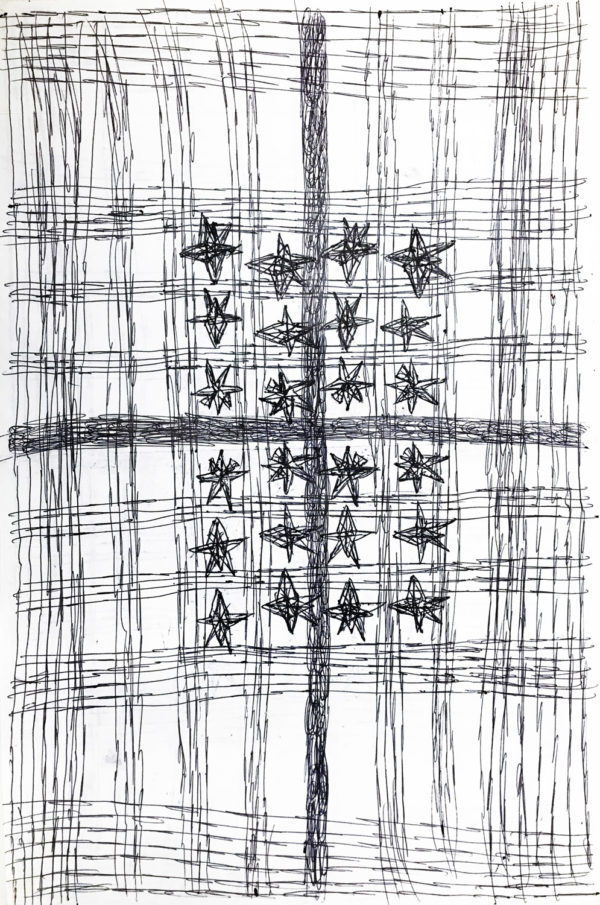Fernando Oreste Nannetti’s father has been unknown. After completing primary school, he was transferred to a charitable institution, before being placed, at the age of ten, in a psychiatric establishment for minors. Following a disease affecting the spine, he was transferred to a hospital where he was treated for two years. Later on he worked as an electrician. In 1956, Nannetti was arrested for contempt of a public servant, then hospitalized the same year in the psychiatric hospital of Santa Maria della Pieta, in Rome. At the age of twenty-nine, he was diagnosed with schizophrenia. Two years later, in 1958, he was transferred to the psychiatric hospital in Volterra, Tuscany. During his hospitalization in Rome he talked entire days and nights however in Volterra, he became very isolated; he had no contact with anyone except the medic Aldo Trafeli. Yet he found another form of expression, on the exterior walls of the establishment — Le Pavillon Ferri —, which he used as a support for his writings. In 1973, he was admitted to the Bianchi Institute, still in Volterra, then a few years later, in another hospital structure in the city where he resided until his death.
Fernando Oreste Nannetti is the author of a scriptural work engraved on the facades of the psychiatric hospital in Volterra, Italy, where he was hospitalized. He believed to have a relation to electric and magnetic waves and receive news by telepathy. He worked on his creation for nine years, from 1959 to 1961, then from 1968 to 1973. This monumental production measures seventy meters in length and is displayed on several walls in the interior courtyard of the establishment. During the daily patient walk, Nannetti carved writings in stone, using the metal buckle of his waistcoat, part of the uniform that each patient had to wear. He always began by tracing a large rectangle on the facade, like an empty page in a “stone book,” before entering extracts from his diary, biographical statements, inscriptions alluding to the war and evocations of places and imaginary characters.
